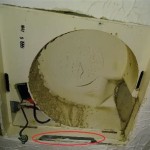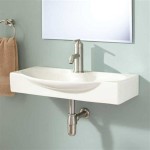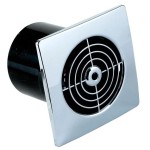I Have a Leak Under My Bathroom Sink: What to Do
A leak under the bathroom sink is a common plumbing problem that can cause significant damage if left unaddressed. While the sight of water dripping from under the sink may seem alarming, understanding the source of the leak and the potential causes will help you take appropriate action to resolve the problem.
Identifying the Source of the Leak
The first step in addressing a leak under the bathroom sink is to identify the source. This can be done by carefully inspecting the area around the sink, looking for signs of water damage or moisture. The most likely culprits include:
- Loose or Damaged Supply Lines: The supply lines carry water from the main plumbing to the sink fixtures. Over time, these lines can become loose or damaged, leading to leaks.
- Faulty Faucets: A leaky faucet is a common cause of drips under the sink. Worn-out washers, loose packing nuts, or a faulty cartridge can all lead to leaks.
- Cracked or Broken Pipes: If the pipes under the sink are old or have been subjected to stress, they can crack or break, causing leaks.
- Overflow Drain Issues: The overflow drain is designed to prevent the sink from overflowing. However, if the drain is clogged or damaged, it can leak water.
Once you’ve identified the source of the leak, you can begin addressing the problem. For simple issues like loose supply lines or leaky faucets, you may be able to fix the problem yourself. However, for more complex issues like cracked pipes or overflowing drains, it's best to call a qualified plumber.
Addressing Minor Leaks
For leaks caused by loose supply lines or leaky faucets, you may be able to fix the problem yourself with some basic tools and materials. Here are some steps to take:
- Turn Off the Water Supply: Locate the shut-off valve for the bathroom sink and turn it off. This will prevent water from flowing to the sink and allow you to work safely.
- Inspect the Supply Lines: Check the supply lines for signs of wear, cracks, or leaks. If the lines are loose, tighten the connections with a wrench. If the lines are damaged, you will need to replace them.
- Repair or Replace the Faucet: If the leak is coming from the faucet, you can try tightening the packing nuts or replacing the washers. If the problem persists, you may need to replace the entire faucet cartridge.
- Clean the Overflow Drain: If the overflow drain is clogged, you can clean it with a wire hanger or a drain snake.
For a leaky faucet, you can often find replacement parts at your local hardware store. Be sure to purchase parts that are compatible with your faucet model. If you are unfamiliar with plumbing repairs, it's a good idea to consult a professional plumber or watch a tutorial online before attempting any repairs yourself.
Preventing Future Leaks
Once you have addressed the current leak, there are several steps you can take to prevent future leaks in your bathroom sink:
- Regular Maintenance: Regularly inspect your bathroom sink and its components for signs of wear or damage. You should also clean the overflow drain periodically to prevent clogs.
- Use Quality Supplies: Use high-quality supply lines and faucets. These components are less likely to break or leak over time.
- Avoid Over-Tightening Connections: When tightening connections, be careful not to over-tighten them. This can damage the components and cause leaks.
By following these tips, you can help to prevent future leaks in your bathroom sink and maintain a dry and functional bathroom.
When to Call a Professional
While you can address some simple leaks yourself, it's important to recognize when you should call a professional plumber. If you encounter any of the following, it’s recommended you call a qualified professional.
- You are unable to identify the source of the leak: If you can't determine where the leak is coming from, a plumber can help diagnose the problem.
- The leak is severe: If the leak is causing significant water damage or is difficult to stop, it's best to call a plumber immediately.
- You are not comfortable performing plumbing repairs: If you are not comfortable working with plumbing, it's best to leave the repair to a professional.
- You suspect a problem with the plumbing system: If you suspect a crack or break in the main plumbing line, it’s essential to call a professional.
A qualified plumber has the experience and knowledge necessary to safely and effectively repair leaks and ensure the longevity of your plumbing system.

How To Fix A Leaking Bathroom Sink Paschal Air Plumbing Electric

Bathroom Sink Drain Leaking Around Threads Premier Plumbing Inc

Common Sink Leaks You Could Probably Fix Yourself

How To Fix Constant Leak Under Bathroom Bunnings Work Community

How To Fix Pipework A Tap Faucet Leaking Under The Sink

Bathroom Leak Top 5 Causes Waterleak Co

Bathroom Sink Drain Leaking Around Threads Premier Plumbing Inc

Hose Under Your Sink Is Leaking Here S What You Have To Do

How Can I Stop My Sink From Leaking And Why Vent Inside Stinky Hometalk

How To Fix Constant Leak Under Bathroom Bunnings Work Community
Related Posts







